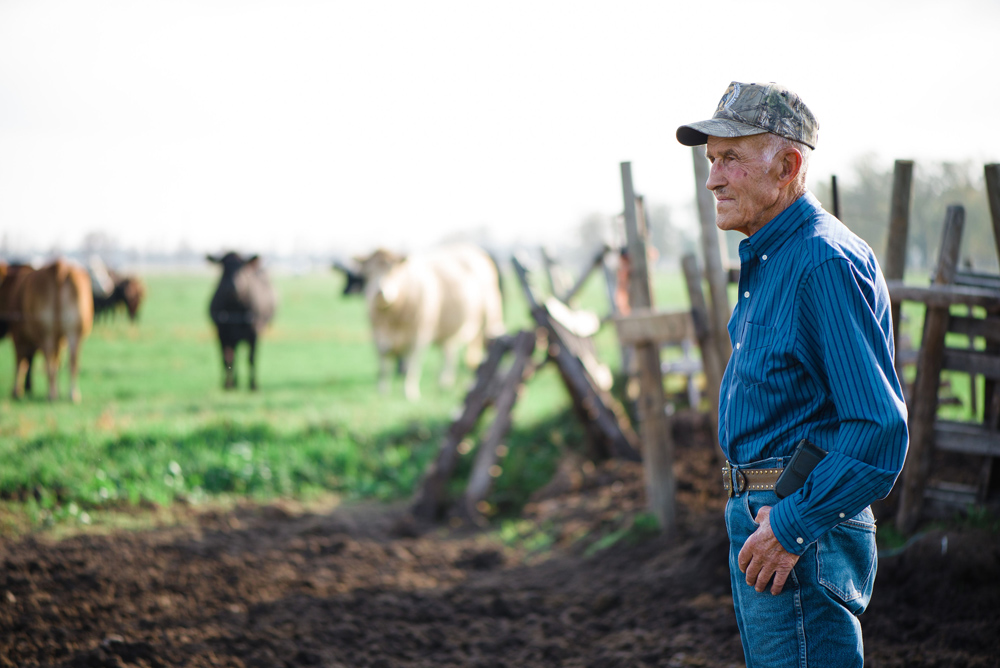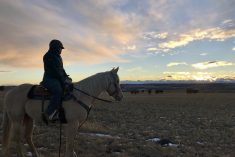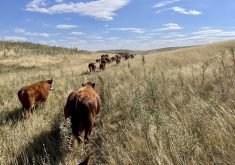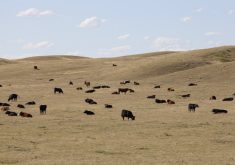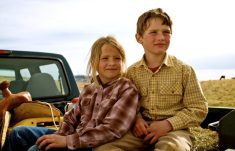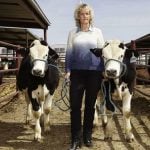Seven decades ago, Albert Mutcher was doing many of the same things he does now.
When he was just starting his agricultural career, he walked through his pastures west of Carman, Man., checking on his recently purchased herd of cattle. The future stretched far and wide in front of him, full of opportunity and as vast as the Prairie sky.
Now, at age 91, Mutcher can still be found walking through his herd. He knows this land and these animals like the back of his hand. After years of working as a cattle producer, Mutcher has his operation refined to perfection. In the winter he says it’s only about an hour of work a day, and maybe only an hour or two per day for the rest of the year.
Read Also
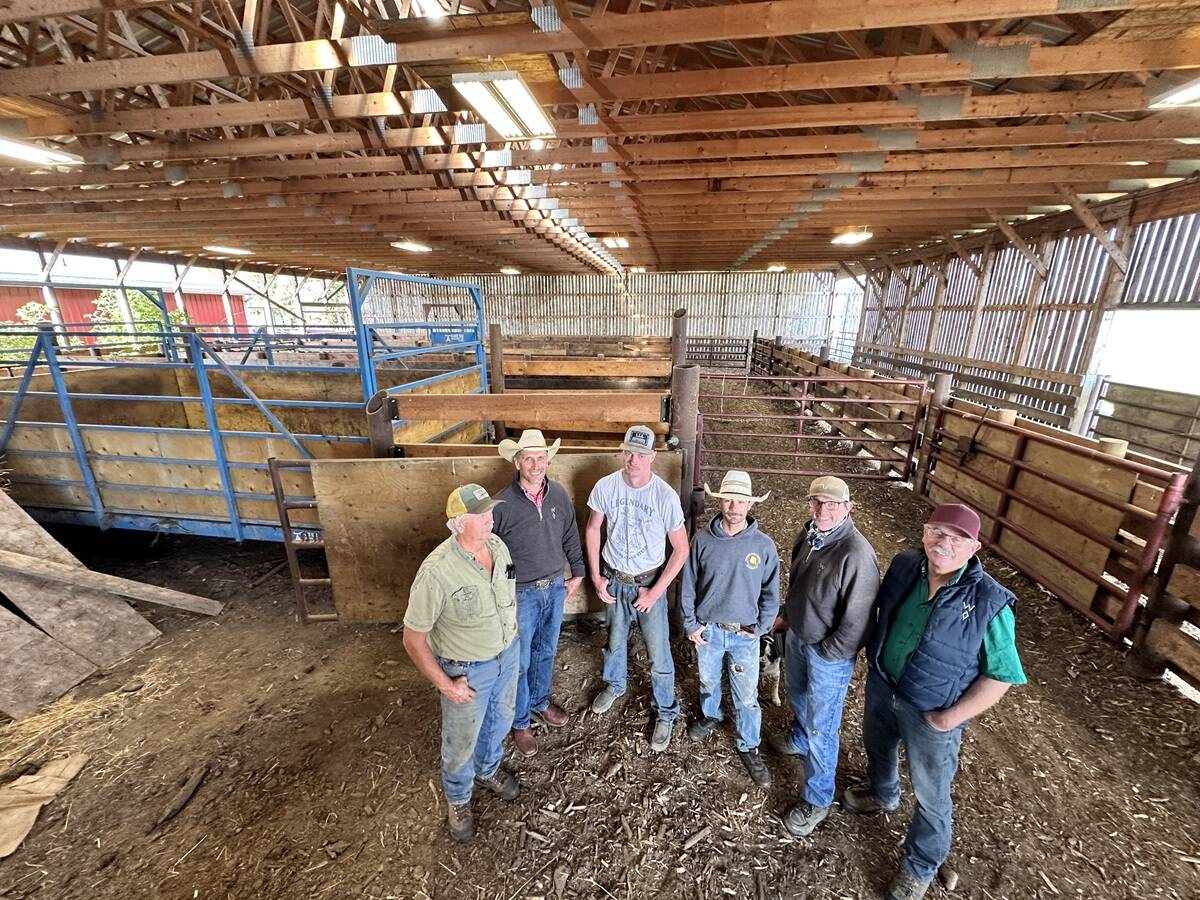
Farm families work together to graze cropland with cattle in the fall
These Alberta farm families have separate operations, but work together to manage their land
He spoke with Canadian Cattlemen in mid-April, right as calving was starting for him.
“I used to calve early but that was a lot of work, and so I’ve kept moving it back. And I’ve been back to middle of April for probably 20 years.”
Even after all these years, Mutcher still loves what he does.
“I enjoy going out and working with them and walking around. Watching them and watching the calves grow and all that sort of thing.”
Childhood
Growing up, Mutcher lived east of Carman on his family’s grain farm. He says east of Carman was grain land, and west was cattle country.
His father had around 20 head of cattle, which sparked Mutcher’s interest in raising livestock.
That’s how he found himself moving west of Carman, into cattle country.
“I bought eight heifer calves in the fall and wintered them and sold them in the spring. And at that time, I bought them heifers for 26 cents a pound and wintered them and sold them for 32, and thought we’d done wonderful.”
He says at one point in time he had 2,400 acres of cropland, and approximately 250 head of cattle. However, around 20 years ago he sold most of his cropland and focused his attention on the cattle business.
Now, he has just under 100 head of cattle and primarily raises Limousin.
He says he likes to raise cattle because of their temperaments.
“The buyers sure liked my calves and that. They’re real nice. They’re not the real big exotics but they’re kind of medium. And I found them easy to handle. I’ve done real well with them.”
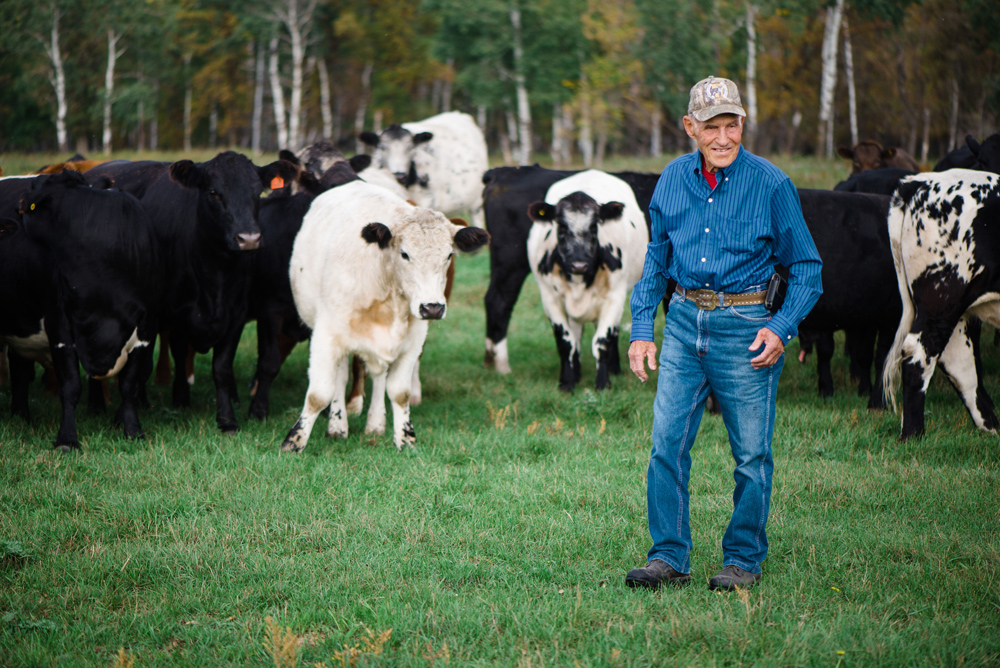
Volunteering and hobbies
Mutcher has done many other things in his long life, as well. He used to be a member of the Dufferin Agricultural Society and a board member for the Carman fair. Through that, he got into judging 4-H shows and is now a prominent and sought-after judge.
He says when he judges livestock, colour and breed don’t matter to him. Instead, he is just looking for a good animal overall. His favourite part of judging is seeing the kids show their animals and helping them improve.
“I judge quite a few smaller shows around and that, and I enjoy telling the kids why they were put up or down in the lineup and so on. And I enjoy trying to get them straightened out on what I think I liked about them.”
He had three children with his wife, Donna, and now has three grandchildren and six great-grandchildren.
His family influenced much of his life and the decisions he made. For example, before he got into farming, he did his training and got his license to fly spray planes.
“I enjoyed it. But after I got married and stuff like that, there were other priorities. So, I sold my plane.”
Though Mutcher gave up flying, he’s seen it come around full circle, with his son, Blair, finding an interest in air application. Blair got his license and had a business for over two decades in Indian Head, Sask.
“It’s funny how it runs in your family or history.”
Now, Mutcher enjoys baking, cooking and gardening.
Industry changes
With his career spanning 73 years in the cattle industry, Mutcher has seen big changes come around for cattle producers. One, which is very prominent right now, is cattle prices.
The price of cattle and land when he was starting out helped him get his footing in the industry.
“Everything else was a lot less money, you know? And $1 a pound at that time was a pretty good price.”
He says another change he has noticed is the size of cattle.
Mutcher says most calves he used to judge were between 850 and 1,000 pounds, but 1,000 pounds was considered large. Now, he says calves are more commonly around 1,500 pounds.
“When we first started, it was basically all British-breed cattle. Now the exotics moved in, and the size of the cattle is one of the biggest things that has changed.”
The increasing size of cattle is a current conversation in the beef industry, with researchers discussing how large cattle can affect the genetic potential of a herd, as well as the effect they may have on the environment and the financial burden of the producer. Beef Cattle Research Council has a page on beefresearch.ca about finding the right-sized cow.
Technology has also come a long way in the 73 years Mutcher has been a producer. And while there have been great moves in the last decade to implement modern technology such as virtual fencing or remotely monitored equipment, for Mutcher, the most influential piece of technology in his long career has been the invention of the haybine and the round hay bale. He says he had one of the first haybines in the Carman area. And, he points out, big round bales ended the need to handle hay by hand.
“That changed everything for the cattlemen.”
Advice
Now, Mutcher wants to pass on what he has learned as a producer to the next generation of ranchers.
He thinks it is tough to compete for cropland right now, but if a young cattle producer can get some good cattle land, then it is a good start.
“Where I have my cattle, which used to be considered strictly cattle country, well, now it’s pretty well all special crop areas. And it’s pretty tough to compete with those fellas. I still think there’s opportunity. If you’ve got land that you maybe can’t crop, I think there’s a good opportunity yet to get into the business.”
With prices the way they currently are, Mutcher thinks young producers are going to have to start small and slowly grow their herd.
“You just got to keep working at it. Like I said, I started with eight and it wasn’t long until I had 100.”
He says producers should take advantage of government programs and incentives to help get themselves established.
Future
Much has changed for Mutcher over the decades, but there are some constants. His ranch is the most prevalent one.
But he’s not doing it all by himself all the time. Nowadays, he has his six great-grandchildren to frequently keep him company when he’s out at the pasture doing chores.
“They got a million questions, and I just really enjoy it.”
He’s happy to answer their questions and to take them out to the ranch whenever possible. In them, he sees the potential future of the industry.
“I think some of them are surely going to be livestock people because they are interested.”
But for now, Mutcher has no plans to retire. He loves what he does and is committed to doing it for as long as he can. At 91 years old, he shows no signs of giving up his lifestyle.
“I’m going to go as long as I can. As long as I can do it and feel good enough, I’m going to keep at it. I just enjoy it so much.”


